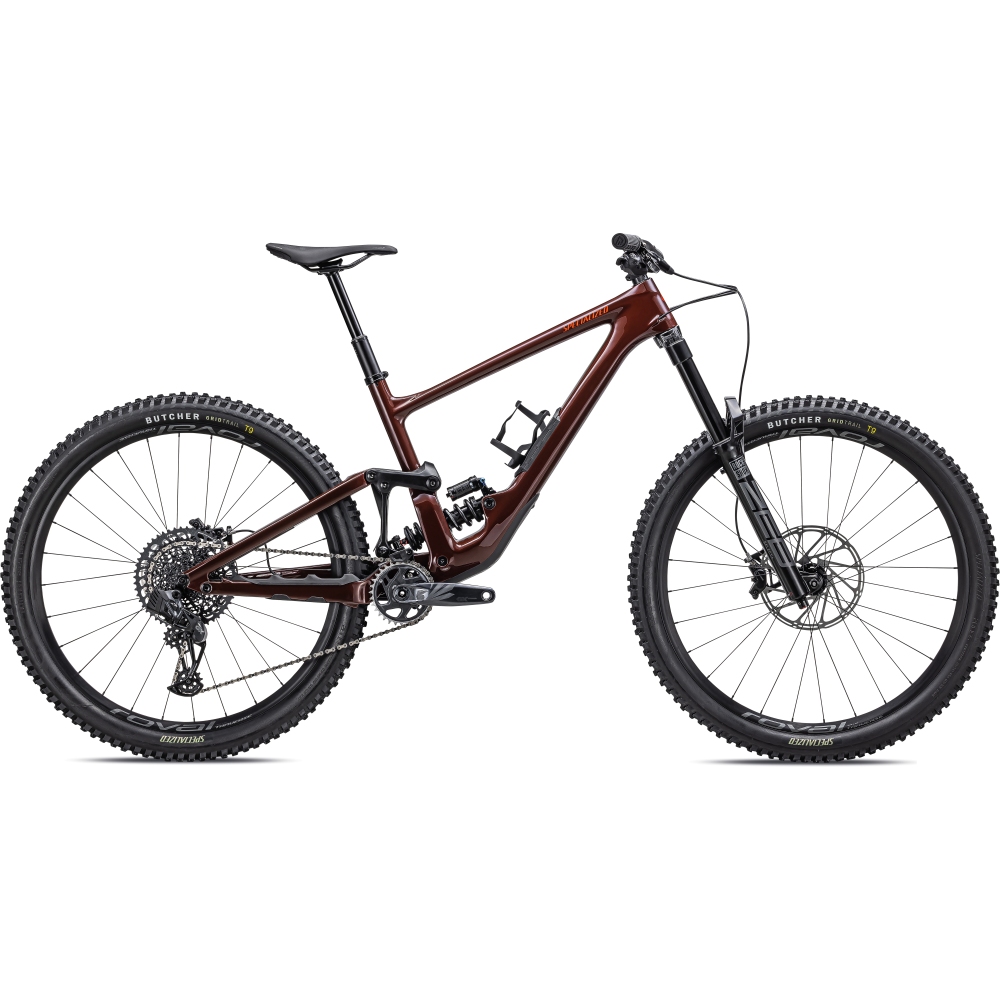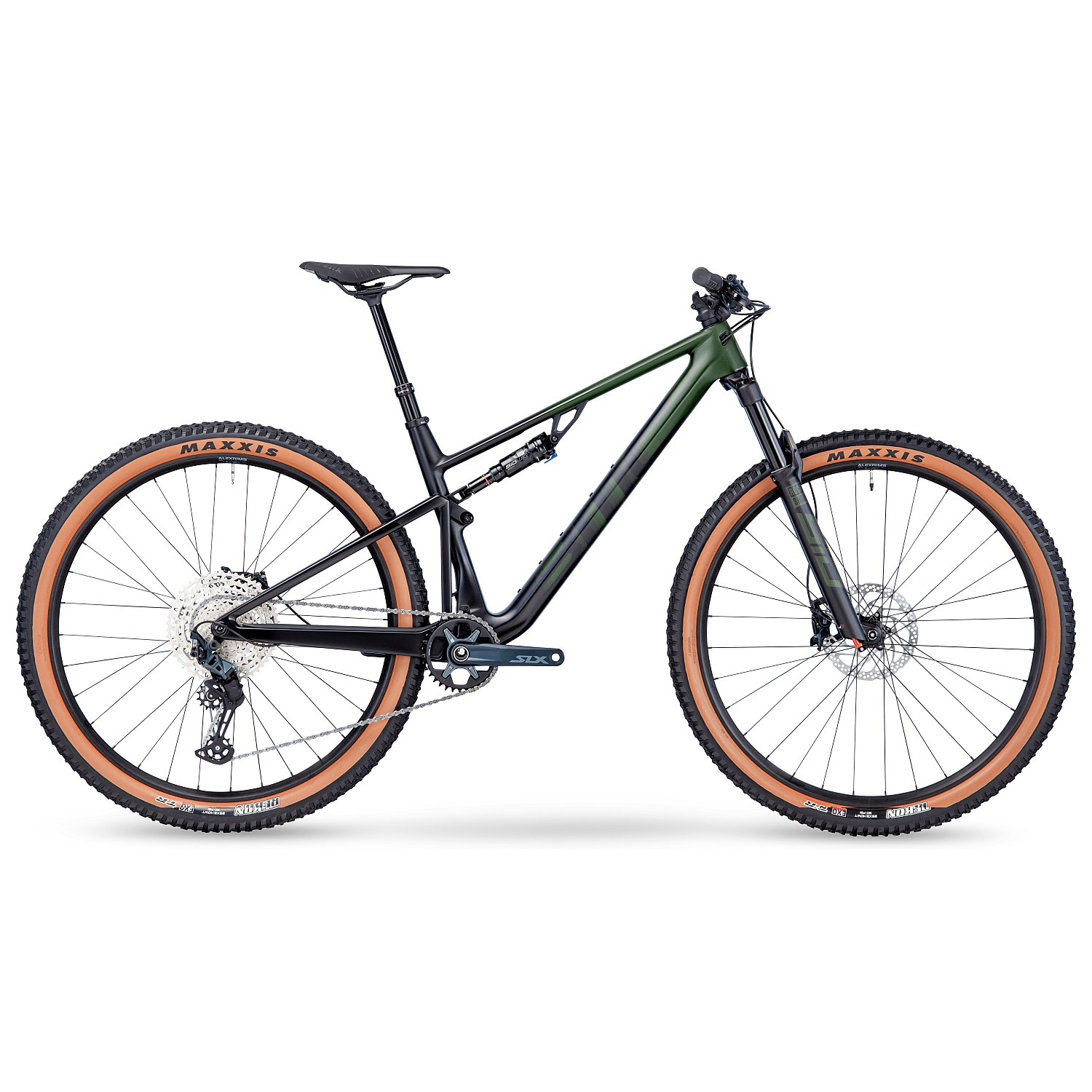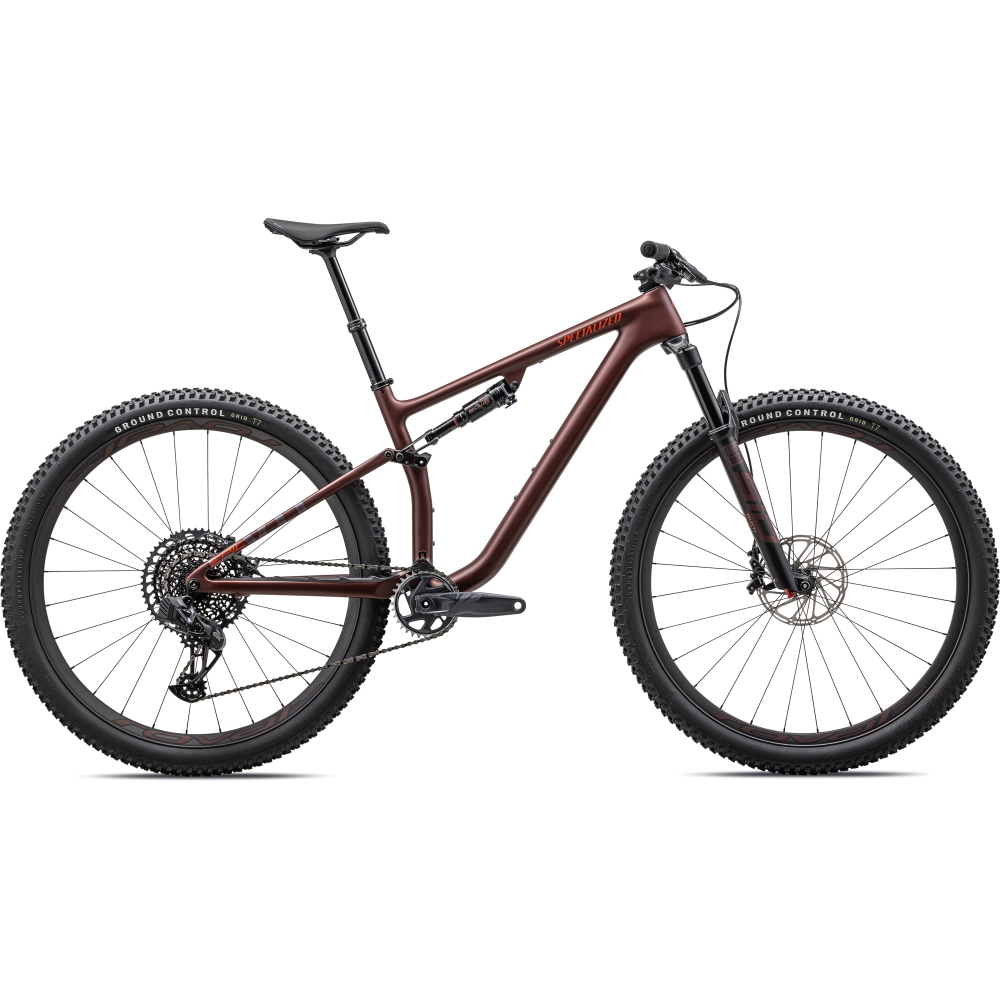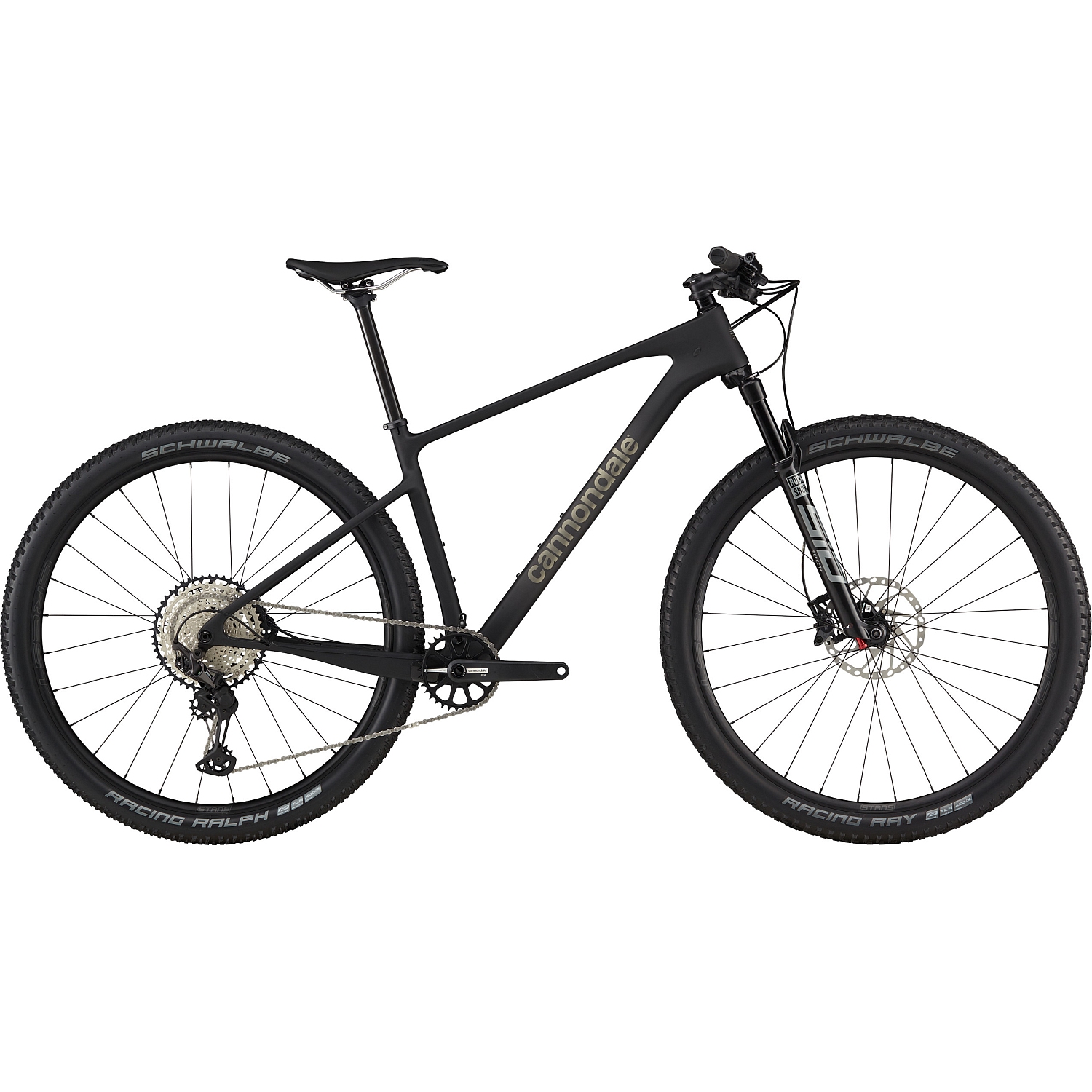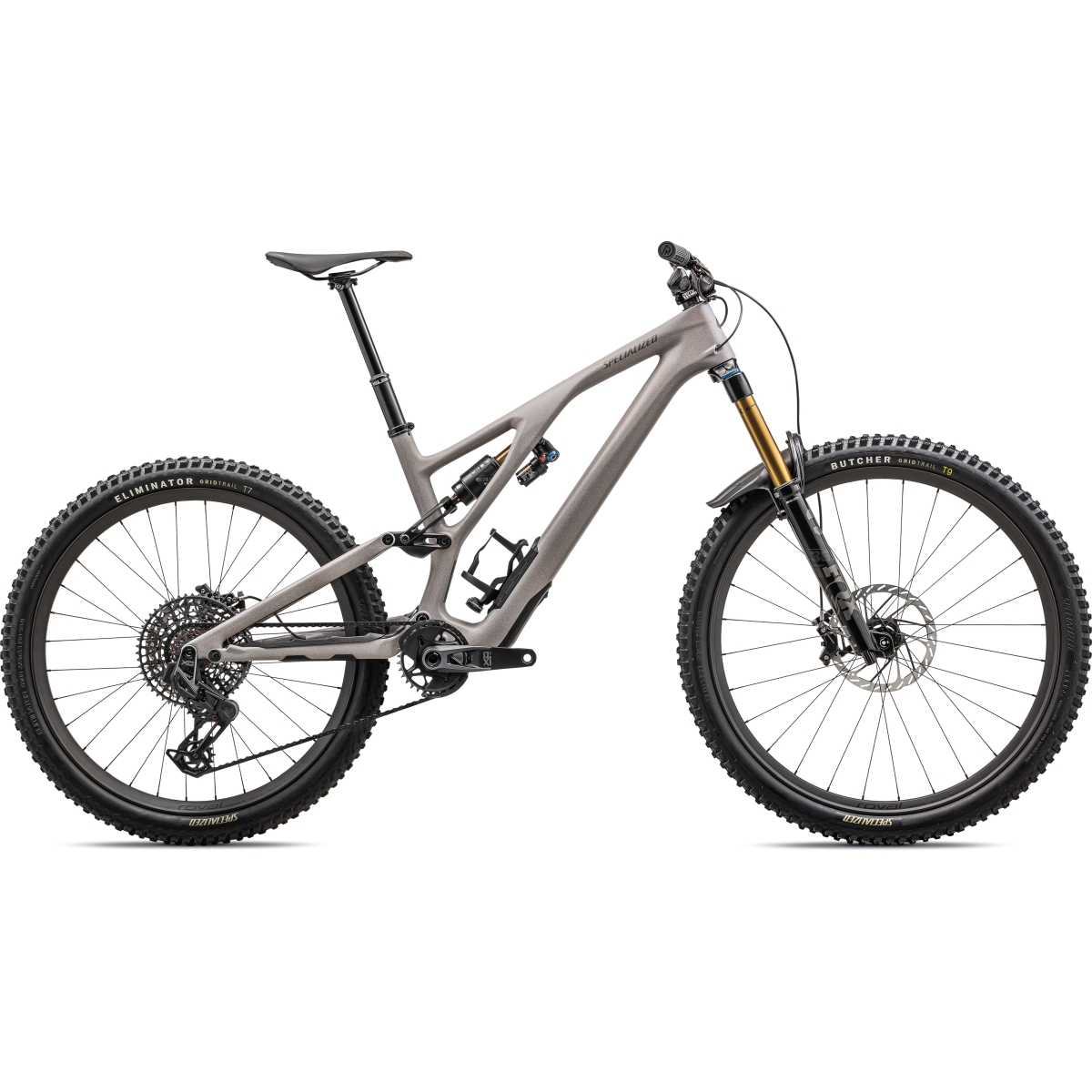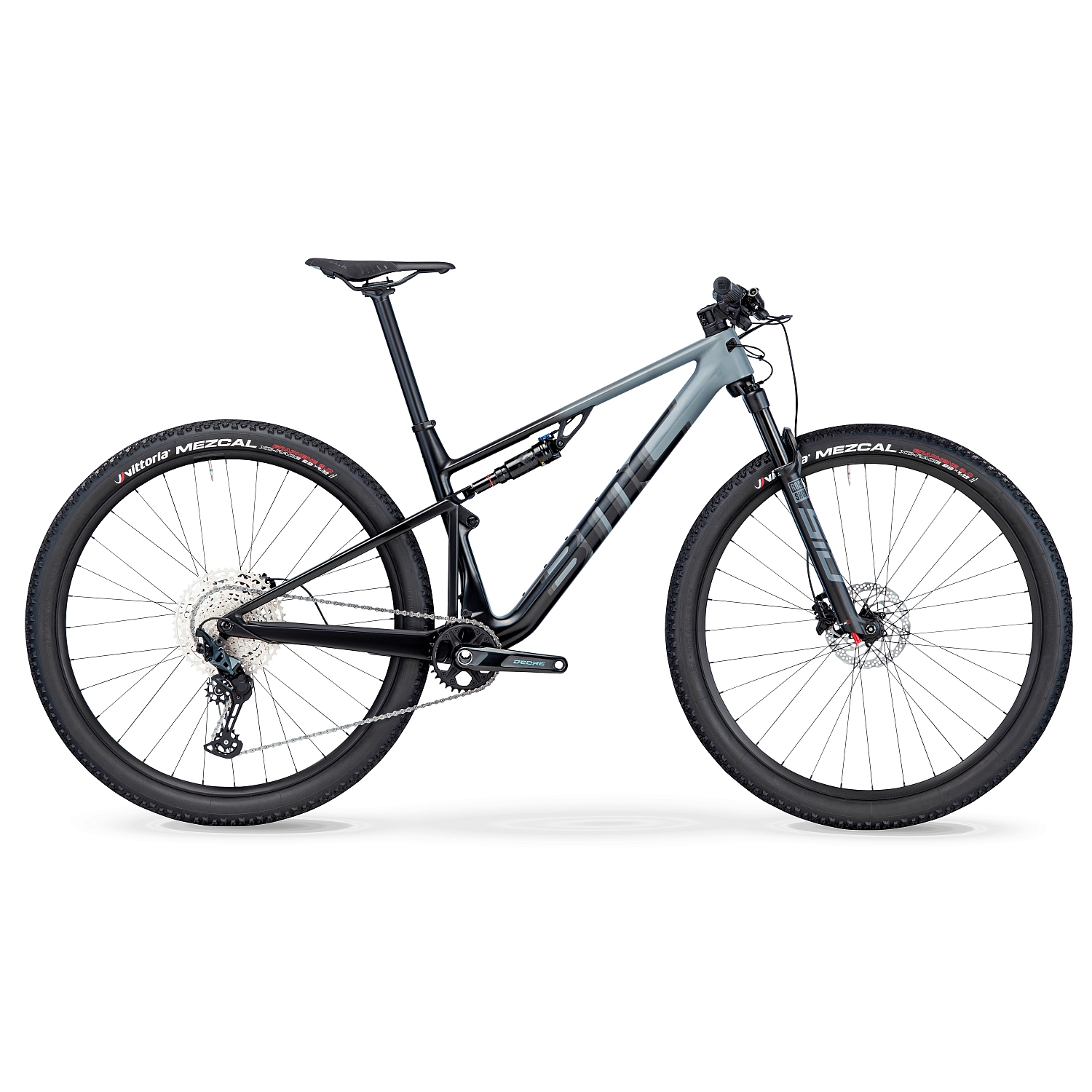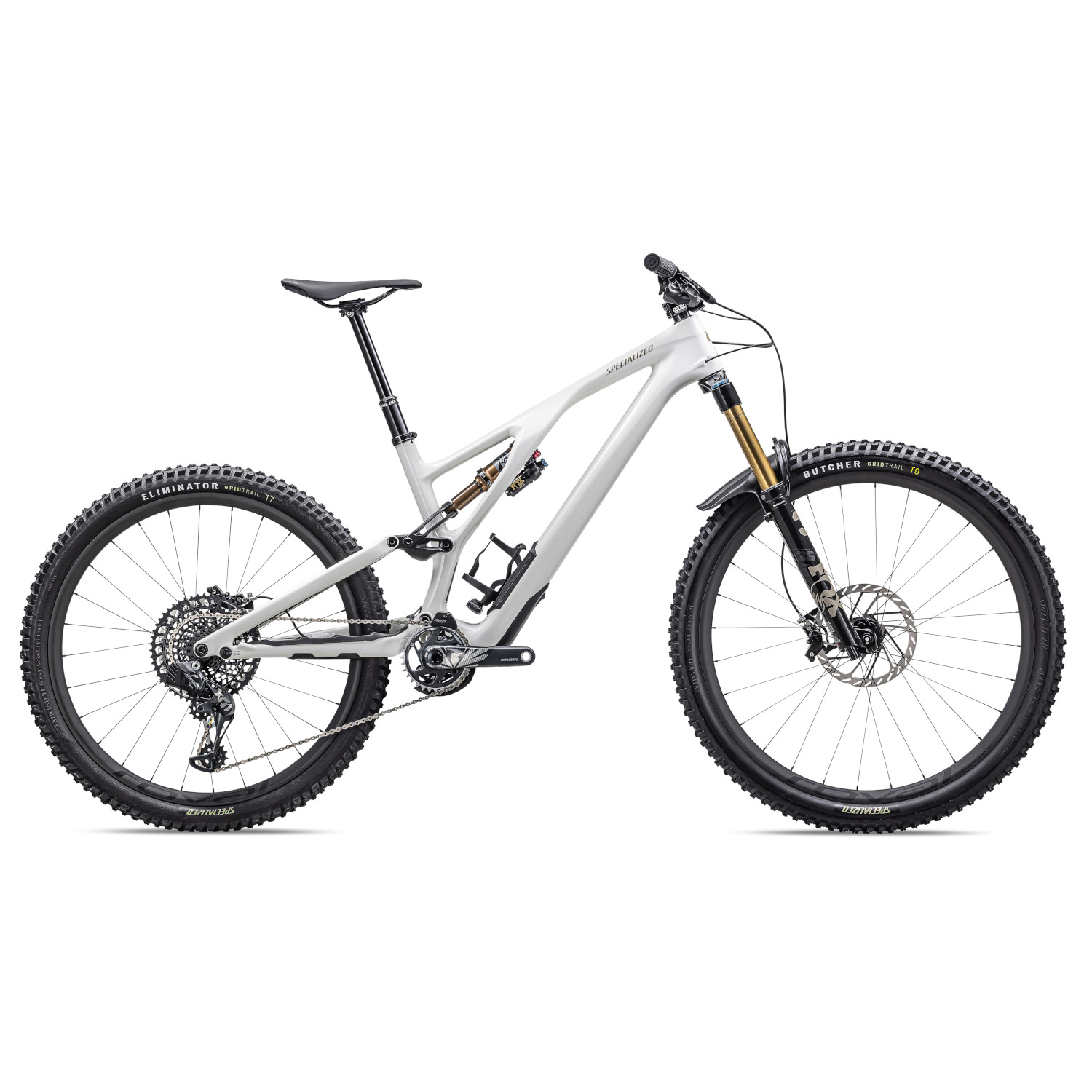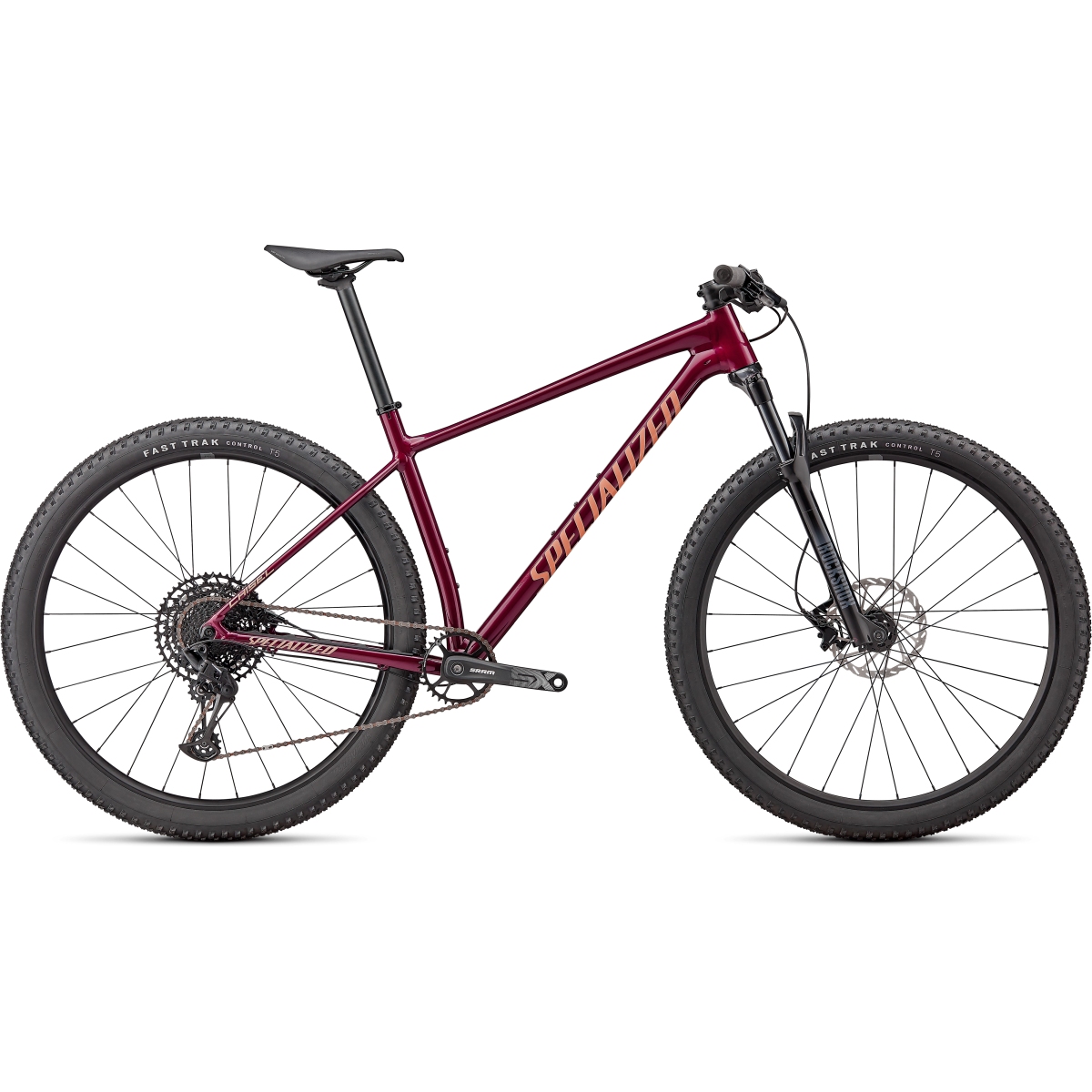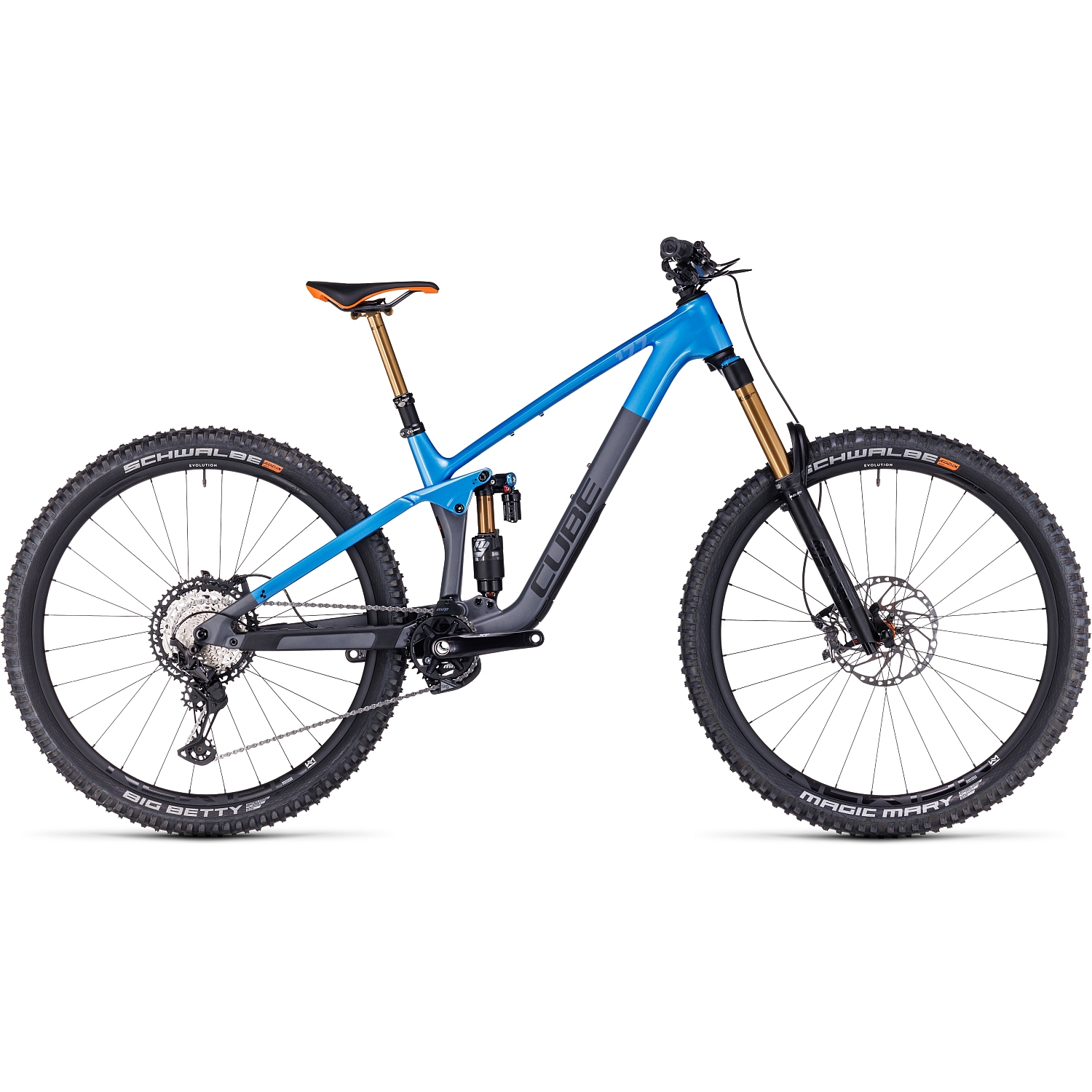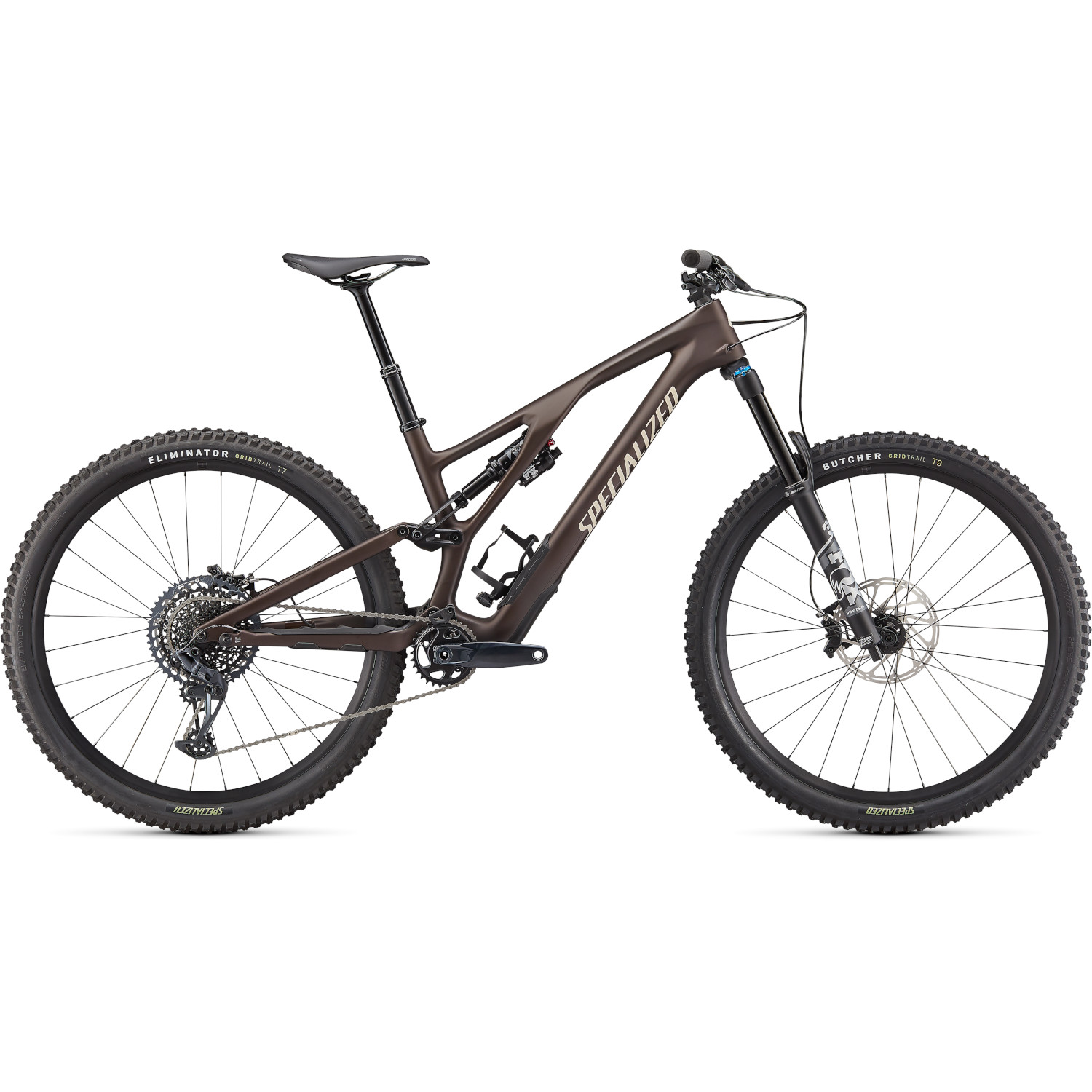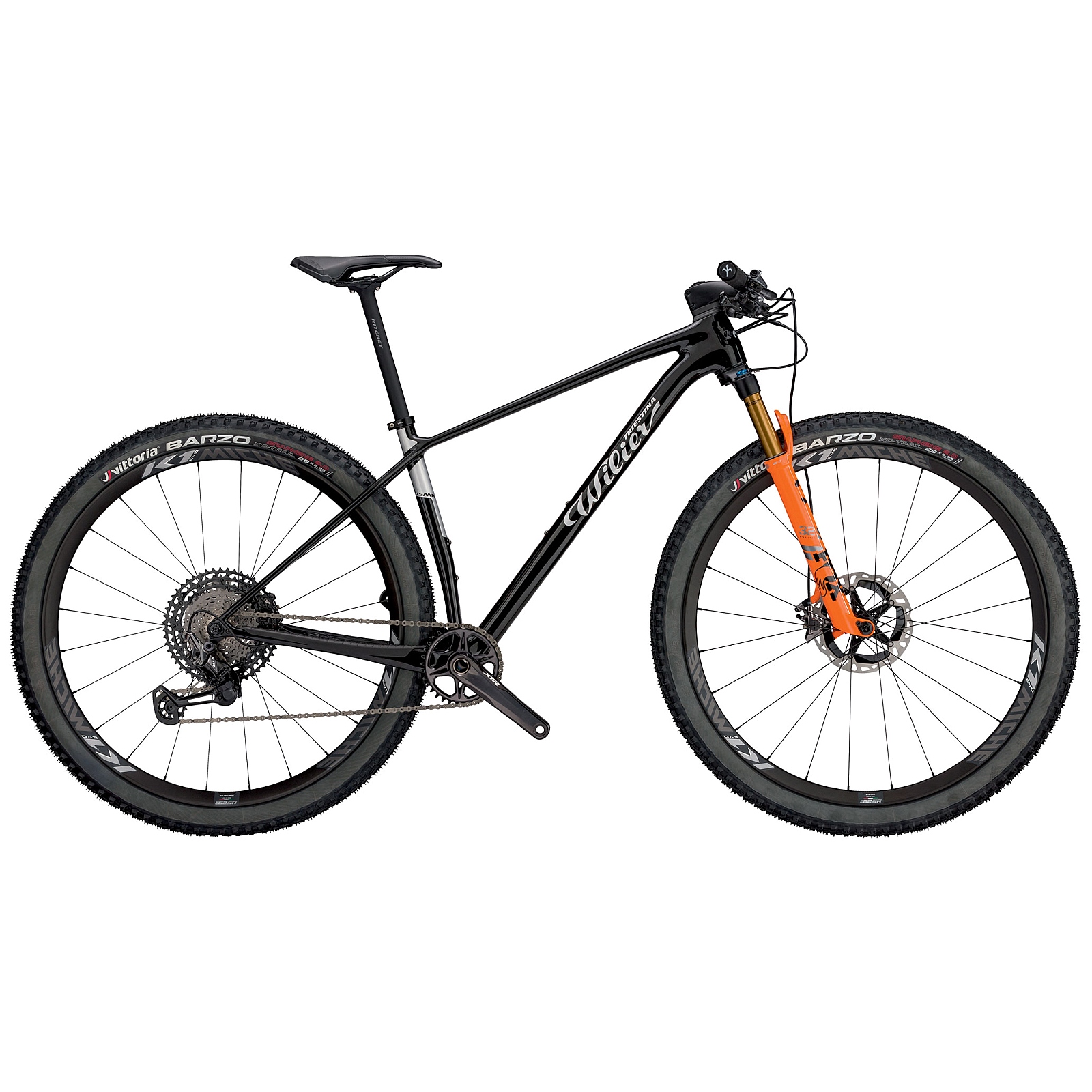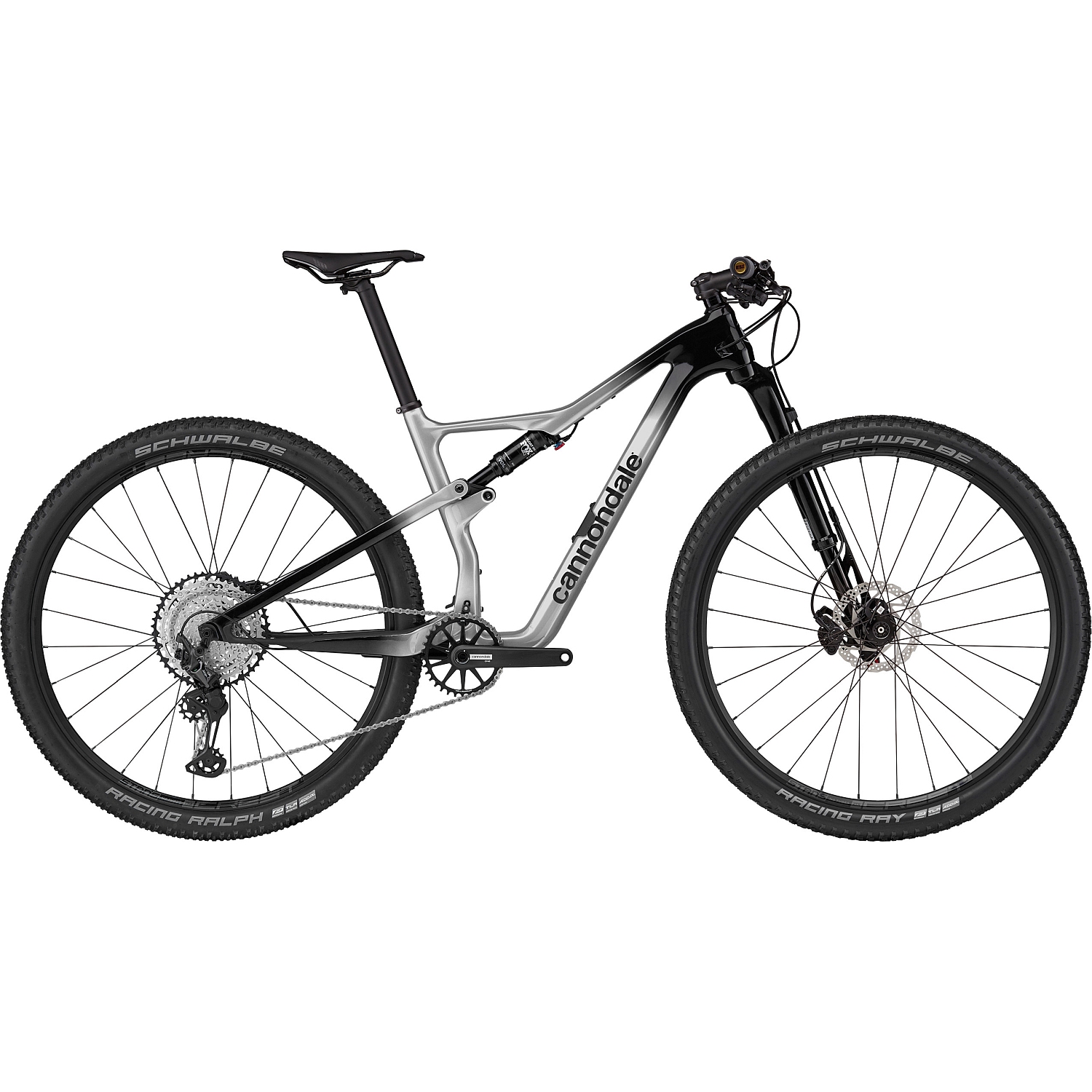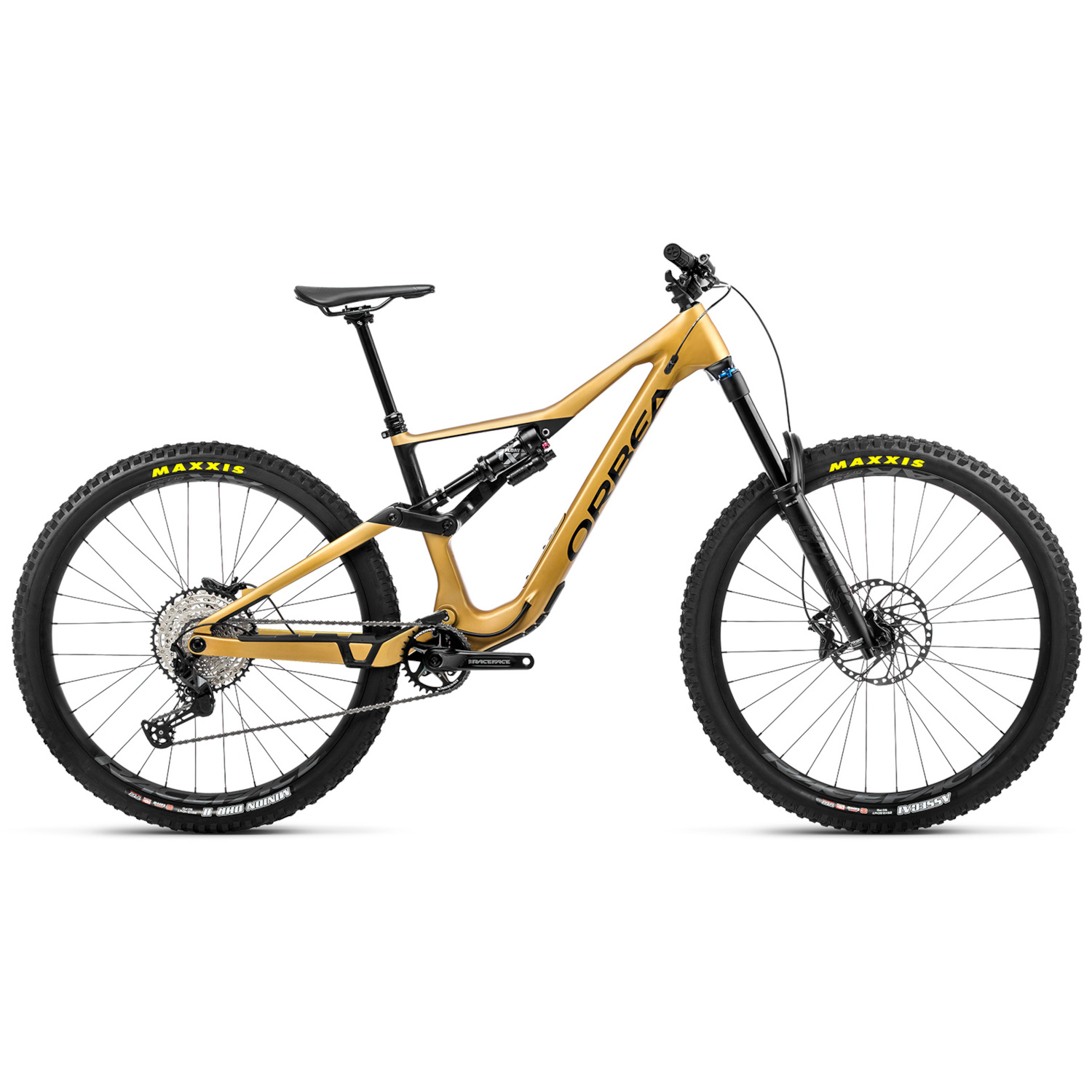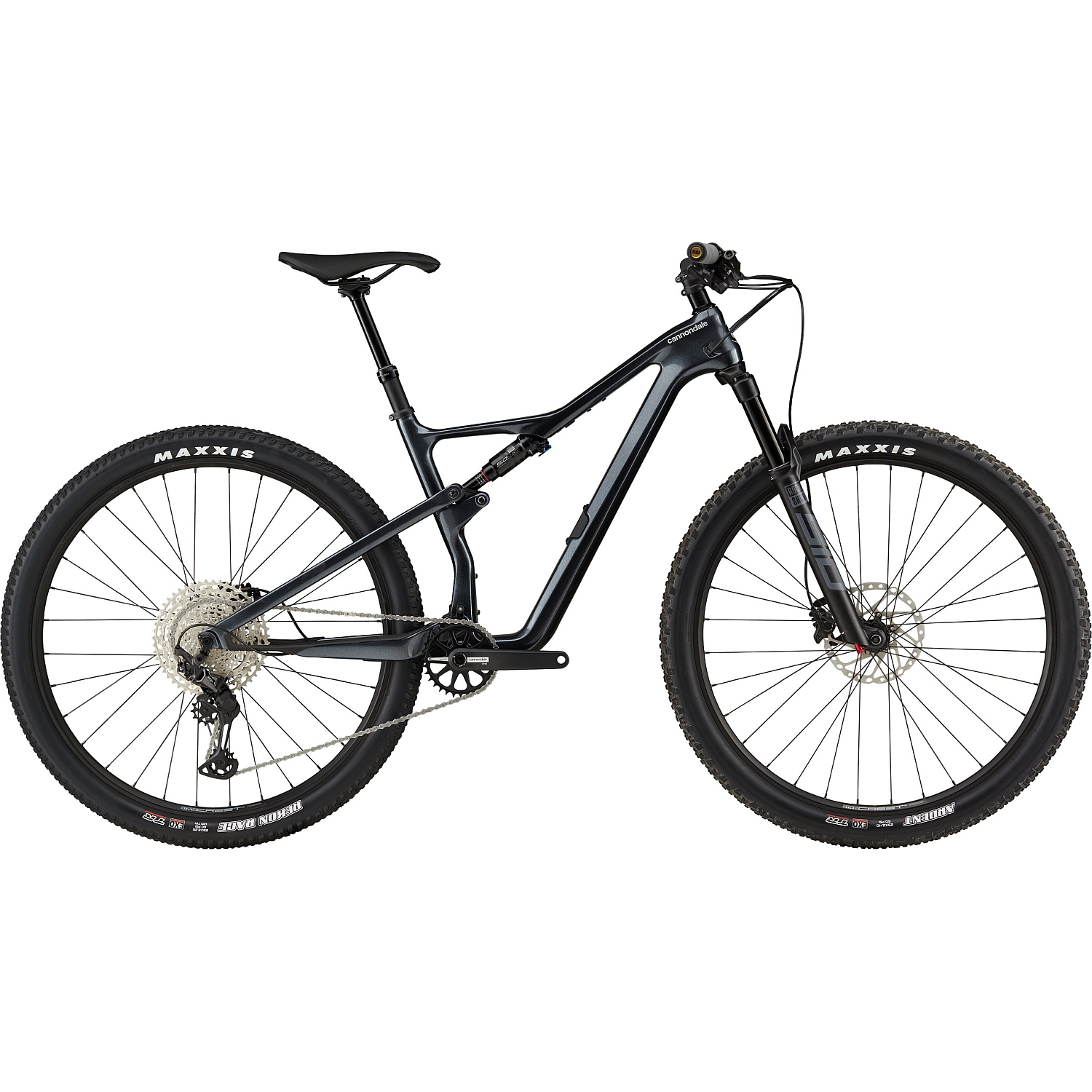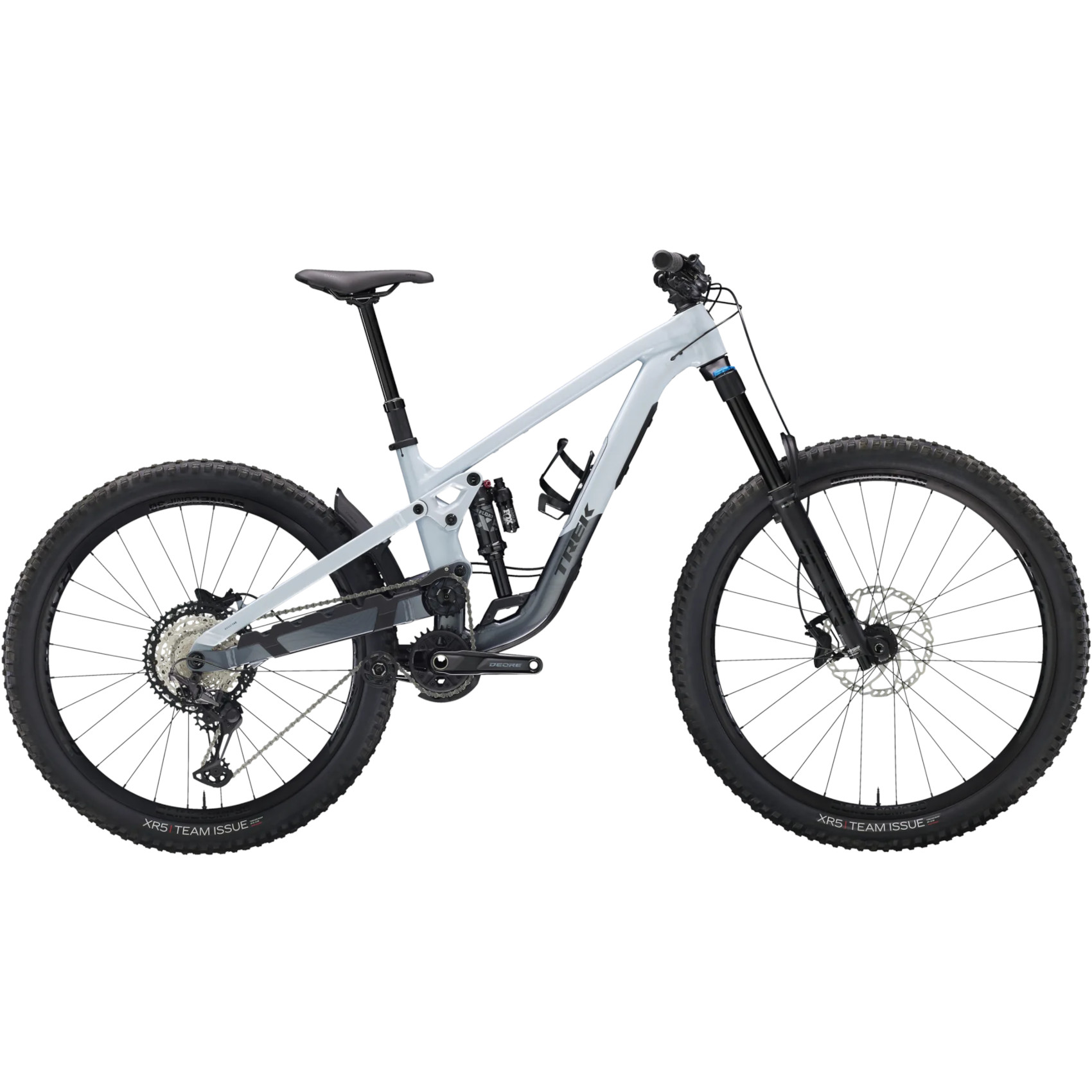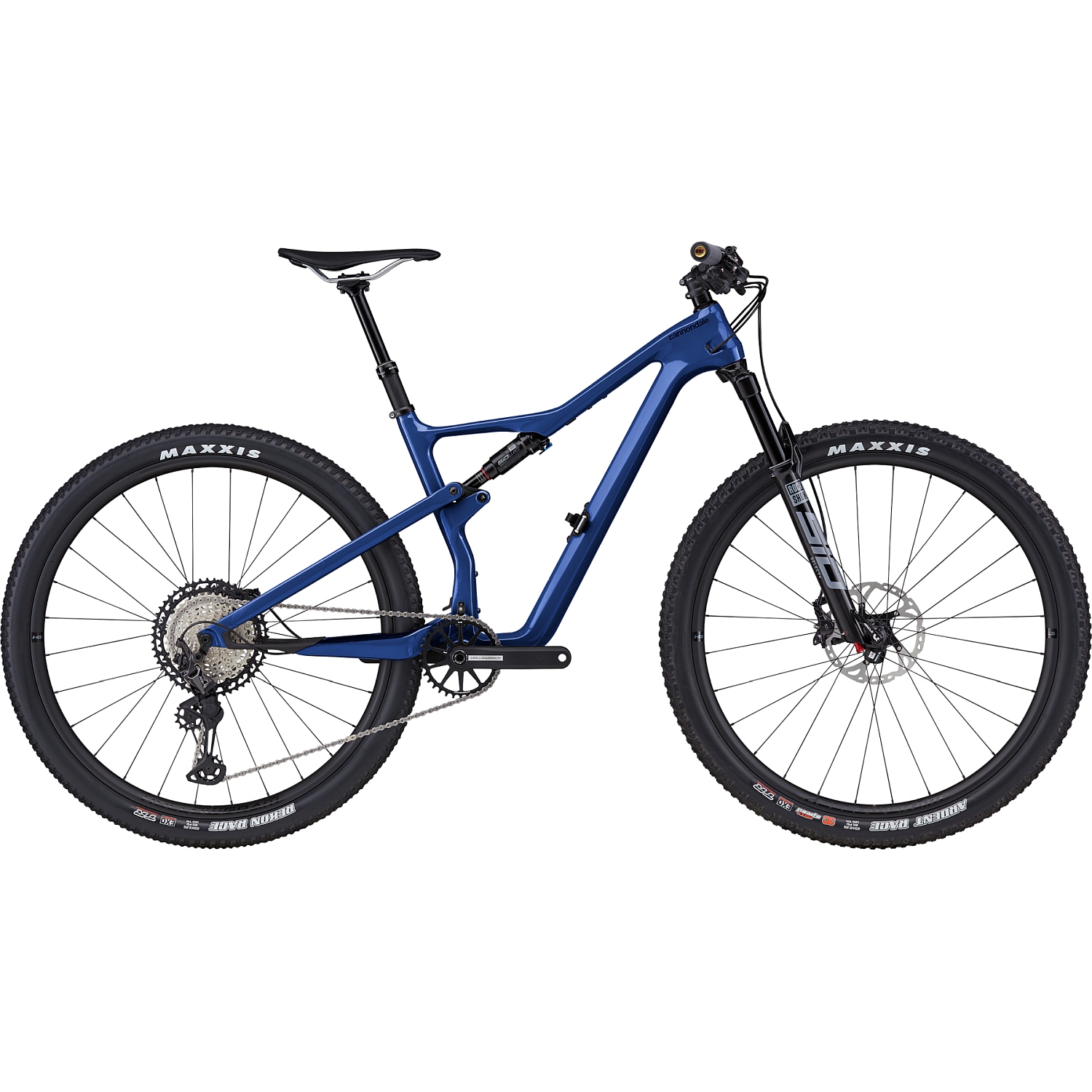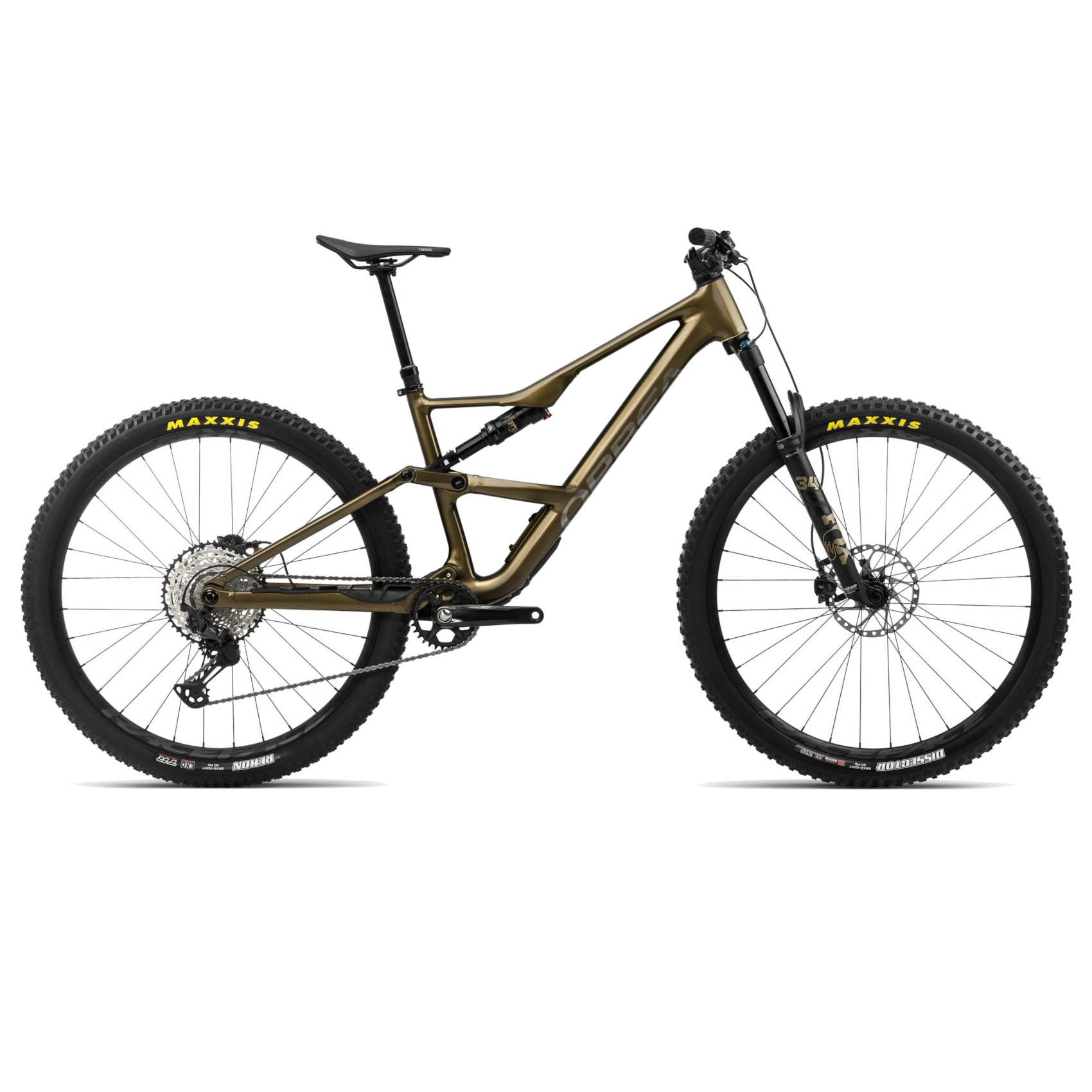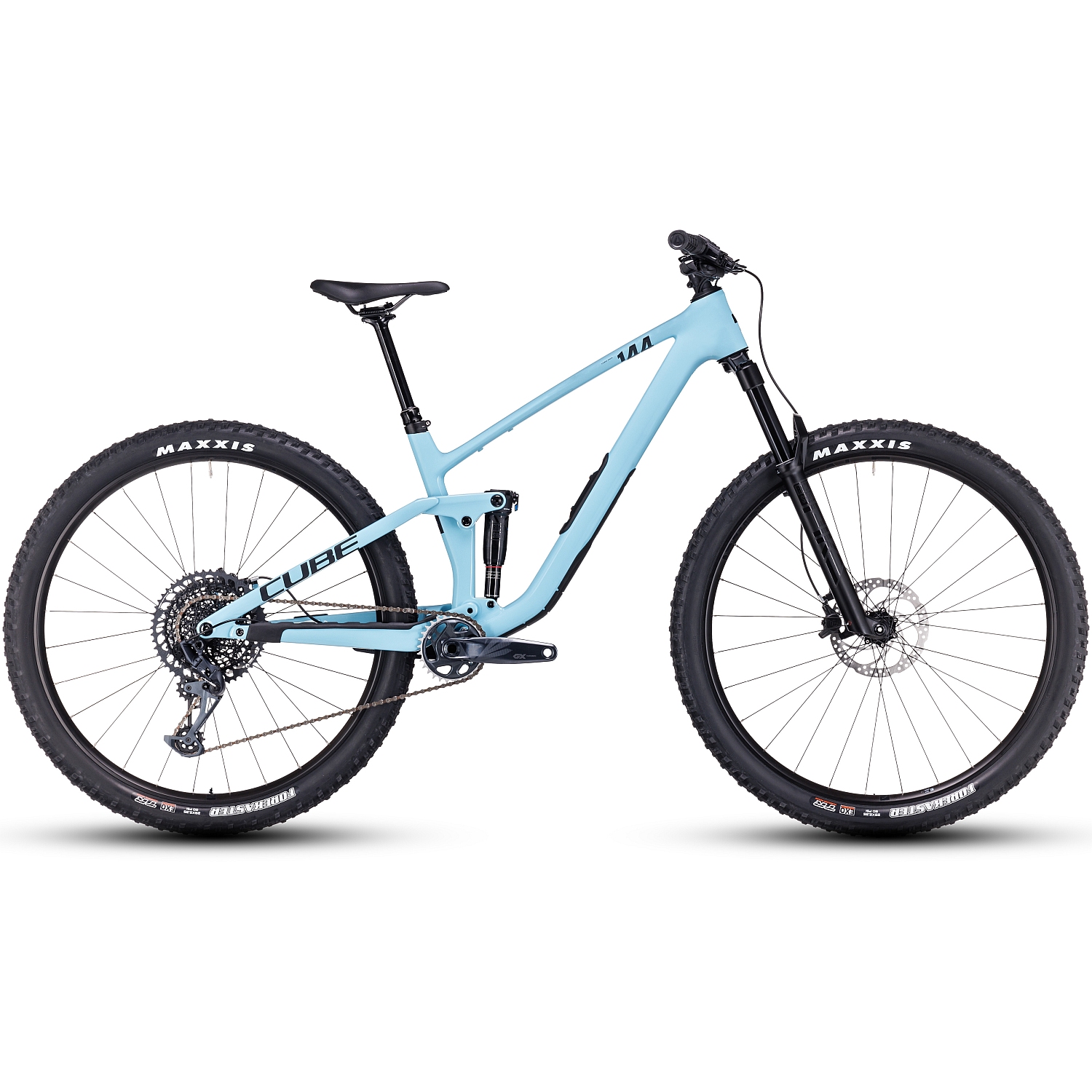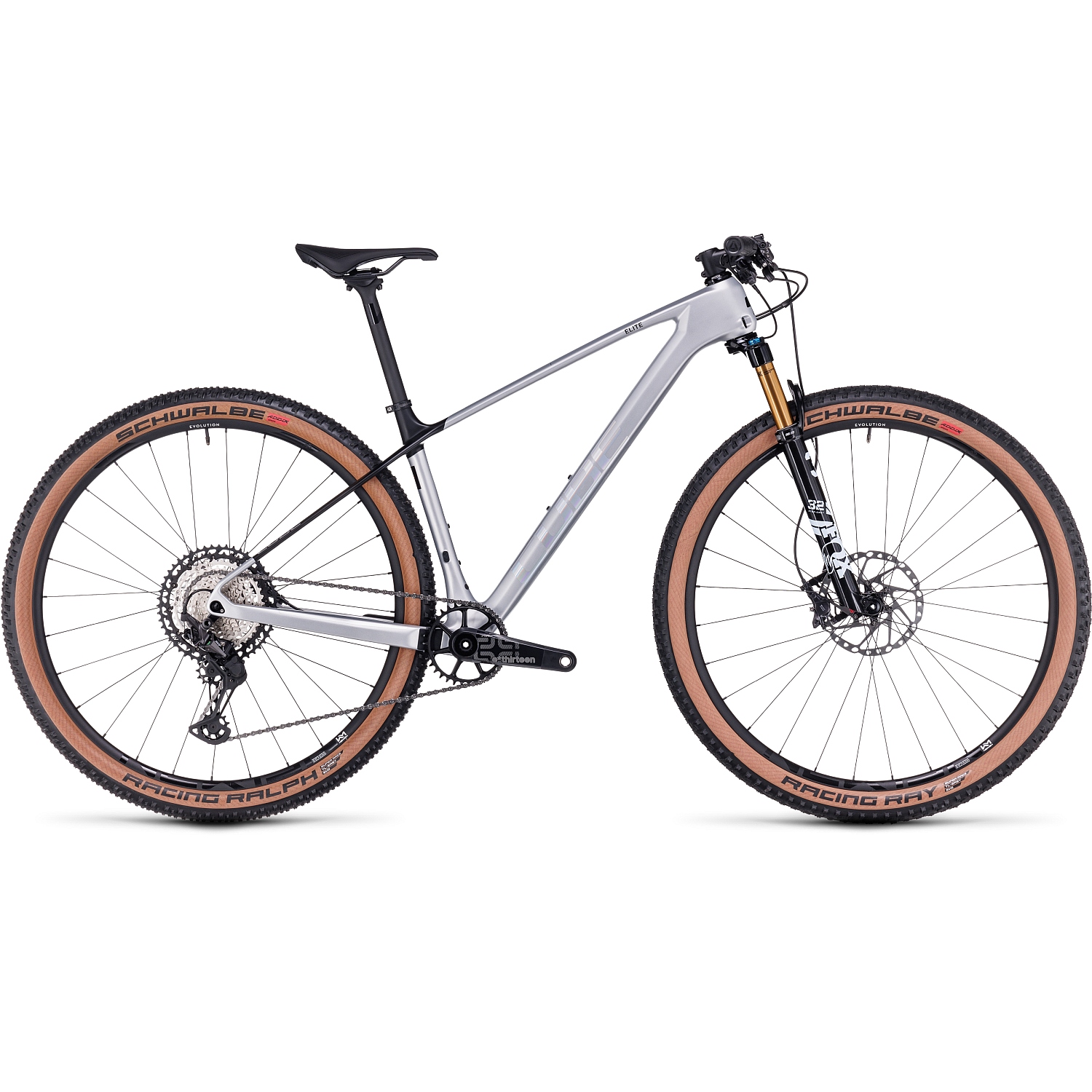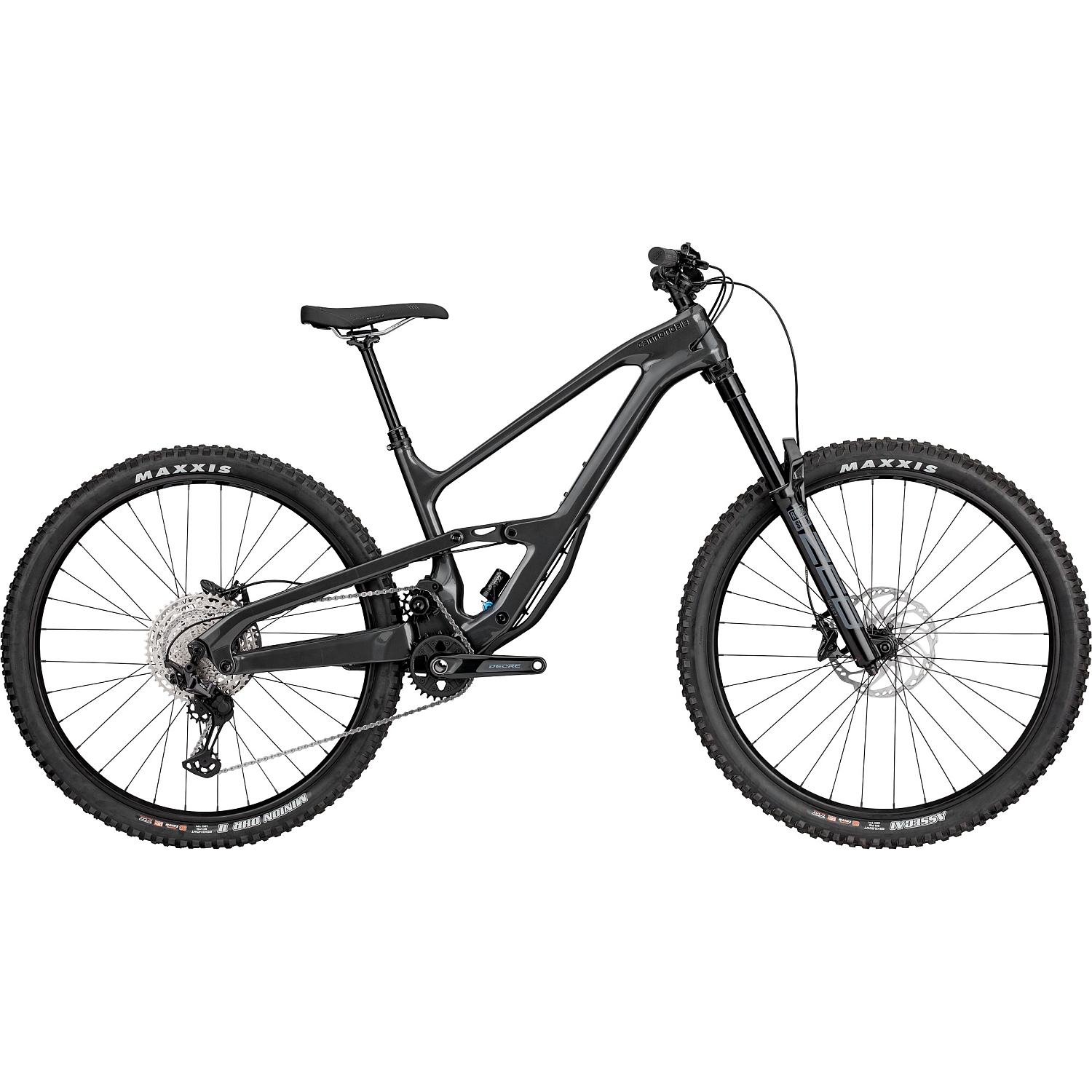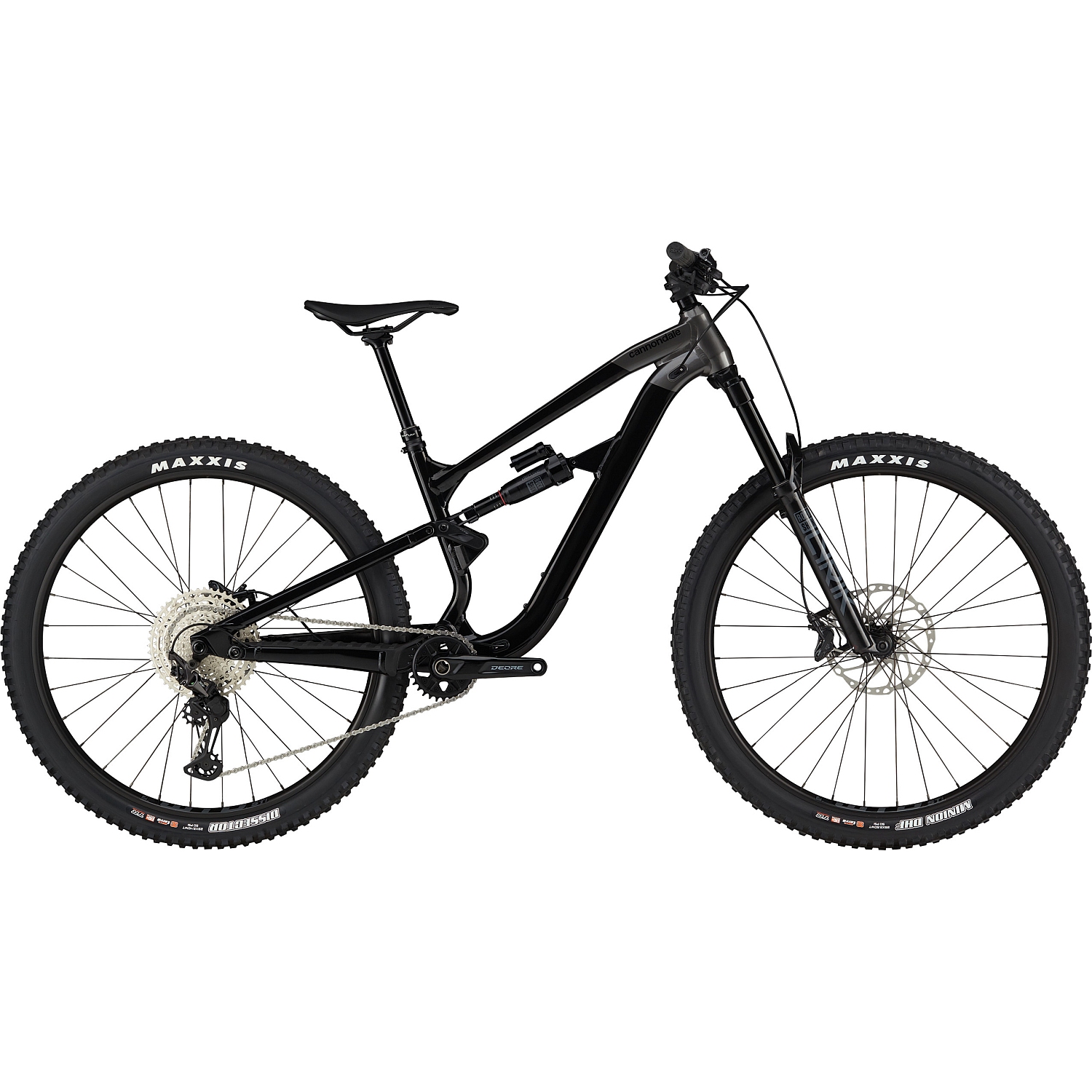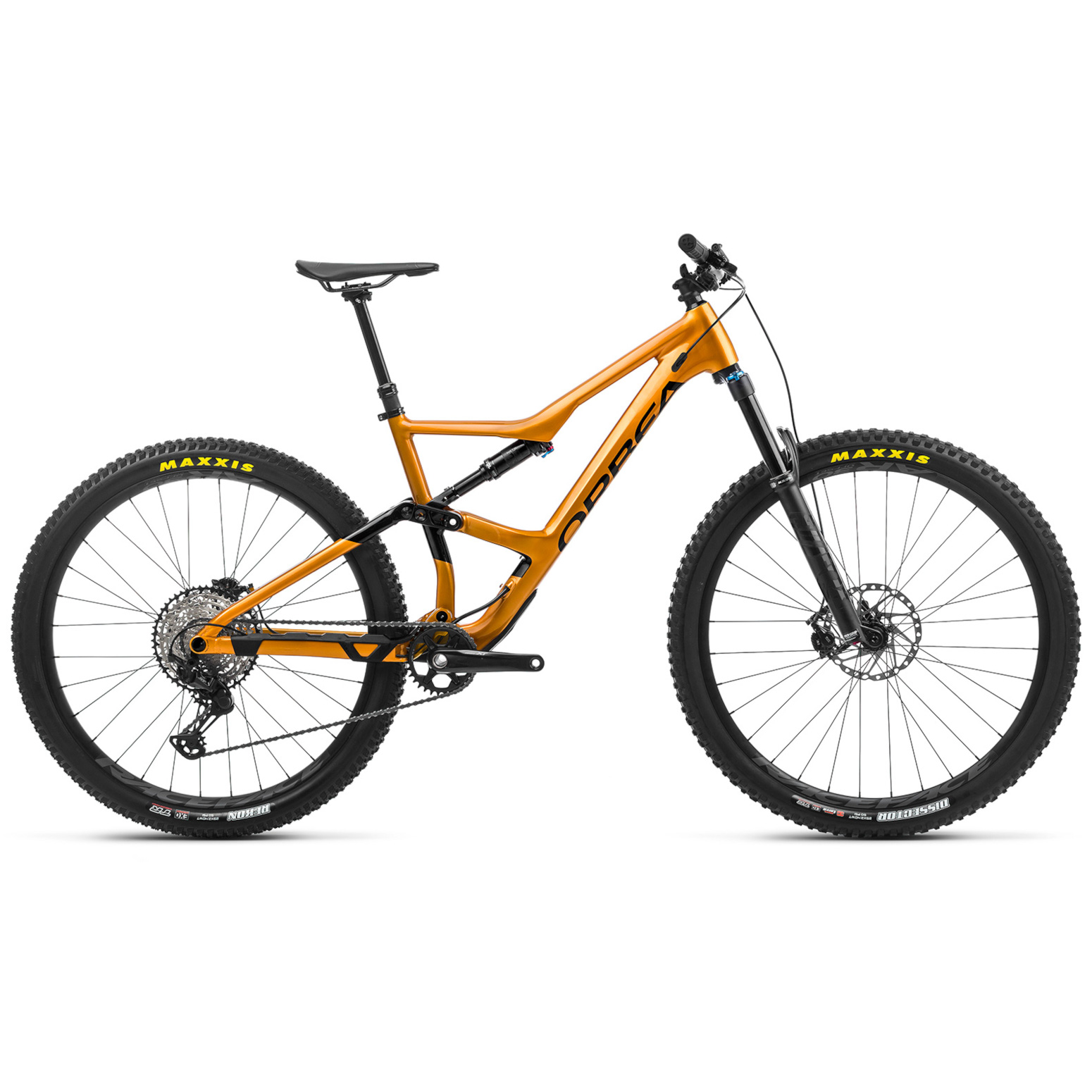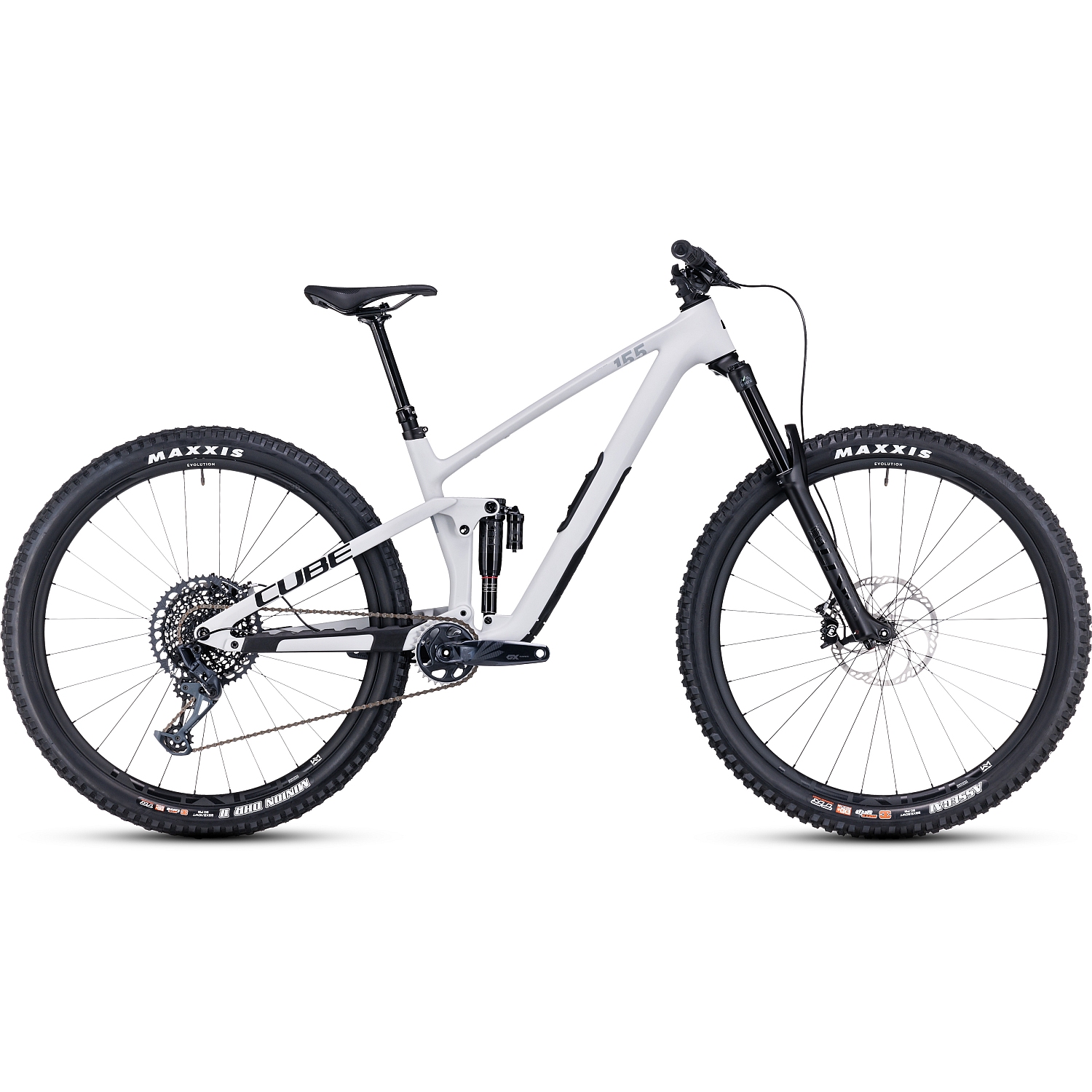Mountain Bikes – Equipped for Any Terrain
Anyone who loves spending time outdoors and venturing far off the beaten track on their bike is best advised to choose a mountain bike. It’s suited for almost all types of trails and can offer everything – from a scenic and relaxed off-road bike ride to an action-packed challenge in rugged terrain. You only need to choose the right MTB for your needs. Read more
What Makes a Modern Mountain Bike Stand Out
Mountain bikes differ from everyday bikes and road bikes in terms of their geometry. They are characterised by their large-volume tyres with knobby tread pattern, a strong frame, suspension, powerful disc brakes as well as typically a derailleur drivetrain with gear ratios fit for the mountains. Nowadays, a dropper post is also an essential part of many mountain bikes.
But these components are not always the same: depending on the application, you’ll find a great range of different MTB models that are each adapted to their specific purpose. Read on to find out more so ou can buy the right bike for you.
Tires and Wheel Size
With modern MTBs, wheels in two sizes are common: 27.5 inch (also known as 650B) and 29 inch. The smaller hoops are stronger, more agile and manoeuvrable and mountain bikes with these wheels are lighter in comparison. 29-inch wheels on the other hand provide greater traction as well as grip and they roll smoother over rough terrain – providing comfort and control for the rider.
Tyre widths range from 2.1 to 2.5 inches – anything larger is considered a “plus bike”. These bikes provide even more grip and comfort, but they are less precise and agile to ride since they are somewhat heavier. Not enough? If you want to ride on extremely soft surfaces like snow or sand, fat bikes with tyre widths of up to 5 inches can serve you the necessary traction, grip and floatation.
In the past, the standard wheel size was 26 inches. This size is only used for dirt jumpers, youth and fat bikes nowadays.
Full Suspension Bike or Hardtail?
Full-suspension mountain bikes have both front and rear suspension while hardtails only come with a suspension fork in the front. What’s best for you largely depends on the type of riding you’re planning on doing as well as you riding style: more suspension provides greater comfort, grip and traction, which is particularly important in challenging terrain. The additional weight of rear suspension comes with increased ride comfort and safety. Hardtails on the other hand are designed for less rugged terrain, require less maintenance and are easier to set up. Considering similar specifications they are lighter and less expensive than full suspension bikes.
Aluminium, Steel or Carbon MTB Frame?
Most mountain bike frames today are made from aluminium or carbon. Both materials are strong and durable.
- If you want to really get ahead and strip away every unnecessary gram from your bike, you’ll inevitably need to choose an extremely light carbon frame – but it will come at a high price.
- However, more affordable models with aluminium frames can also be found. While the light metal can’t compete with carbon on the scales, it’s by no means heavy and generally performs very well.
- With hardtails, frames made from titanium or steel are also common. Both materials are characterised by a distinctive look, durability and lively handling. Titanium is particularly popular for its low weight and shiny aesthetics, but it’s also quite costly. On the other hand, steel frames are heavier but considered extremely robust and durable.
The Drivetrain on Mountain Bikes
Usually mountain bikes use a derailleur to shift the chain between a number of sprockets. Modern wide-range cassettes with 11 or 12 sprockets eliminate the need for a front derailleur for most riders, so the majority of high-end mountain bikes come with only one chainring in the front. Models with a front derailleur and two or three chainrings as well as MTBs with hub gears or a gear box integrated into the frame are available as well but less common.
Which MTB Is Right for You?
Your mountain bike should be perfectly suited to your body and the style of riding you’re planning on doing. The following types of MTB exist:
Cross-Country / Marathon
In the case of light cross-country bikes (or XC bikes for short), going fast uphill is the priority. They are often hardtail MTBs but XC full suspension mountain bikes are becoming more and more common. Equipped with fast-rolling tyres, they are intended for trails but not too difficult terrain. The amount of suspension travel sits on the lower end of the spectrum (around 100 mm), which can limit ride comfort on very rough ground. However, these MTBs are ideally suited for cross-country races, marathons or endurance riding.
Trail Bikes, All-Mountain and Enduro
These bikes are the all-rounders in the world of mountain bikes, providing heaps of fun on the descents while getting you up the mountain comfortably. They are characterized by their balanced geometry and robust tyres.
- Both flat terrain and mountainous tracks are no problem for trail bikes. With suspension travel somewhere between XC and enduro they offer enough comfort to provide an enjoyable riding experience both uphill and downhill.
- Modern enduro bikes offer descending capabilities that exceed those of downhill bikes from just a few years ago. Fast descents with drops and jumps are no problem with suspension travel of around 160 mm, yet you can still pedal them up the hill under your own power.
Downhill Bikes
Downhill mountain bikes are made to go fast down the gnarliest descents. When you want to race the clock to the bottom of the mountain, a downhill bike should be your choice. Reinforced tyres with an aggressive tread pattern, suspension travel of 200 mm both front and rear as well as a longer wheelbase and extremely slack head angle provide control and make this type of MTB perfect for use in very steep and rough terrain.
Pure Fun: Men’s and Women's Mountain Bikes
Many manufacturers offer mountain bike models that are specially tailored to female anatomy. The saddle, handlebars and grips are adapted ergonomically, while the suspension is tuned for the lower average body weight. However, if some women feel most comfortable on men’s mountain bikes, there’s no reason why they shouldn’t ride them. Individual components like the seat can be replaced easily if necessary.
Buy a Mountain Bike Online at BIKE24
In the BIKE24 shop, you’ll find a wide range of all kinds of mountain bikes for any application. But first you should find out the right bike frame size for you. This is key for a comfortable fit and an optimal MTB riding experience. When it comes to bike assembly, however, there is no need to worry. Our skilled mechanics assemble each bike prior to shipping so you only need to take a few minor steps at home to make your MTB, ordered from our shop, ready to ride. For any questions relating rame size, assembly or anything else about mountain bikes, our BIKE24 Customer Service will be happy to help.
* Savings compared to the manufacturer's or German distributor's recommended retail price.
